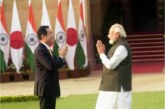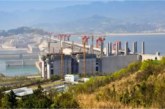Recent months have witnessed fast pace of developments occurring in Afghanistan without pointing out towards any tabgible solution of the decade-long Afghan crisis. The last week of June this year saw shift of command from Gen. Stanley A. McChrystal to Gen. David H. Petraeus in Afghanistan. The US command shift is unlikely to yield any ‘wonderful, results in the near future because strategy, military personnel and equipment is the same.
The present Afghan ruling elite, including President Karzai, has occasionally voiced its support for ‘reconciliation’ with moderate Taliban leadership, an idea which is gaining gradual support with European Union and some segments in Washington as well. There exist differences between President Karzai and the US and NATO command. President Karzai is doubtful of West’s capabilities to contain Taliban resurgence.
The American war strategy rests largely on clearing ground held by the Taliban so that Karzai’s army and government can move in, allowing the Americans to scale back their involvement in an increasingly unpopular and costly war.
Relations with Karzai have been rocky for some time, and international officials have expressed concern in the past that his decision making can be erratic. During the winter of 2009, Karzai accused NATO in a speech of ferrying Taliban fighters around northern Afghanistan in helicopters. Earlier this year, following criticism by the Obama administration, Mr. Karzai told a group of supporters that he might join the Taliban.
American officials tried to patch up their relationship with Karzai during his visit to the White House in May this year. Indeed, on many issues, like initiating contact with some Taliban leaders and persuading its fighters to change sides, Karzai and the Americans are on the same page.
But their motivations appear to differ starkly. The Americans and their NATO partners are pouring tens of thousands of additional troops into the country to weaken hard-core Taliban and force the group to the bargaining table. Karzai appears to believe that the American-led offensive cannot work.1
Karzai government is neither popular nor stable and its writ runs only in a couple of heavily militarized townships in Kabul and surrounding areas. West is equally apprehensive of Karzai administration’s ability to contain Taliban of its own. The West is tolerating Karzai for the past one decade in the absence of a better alternative. Media reports indicate prevalence of rampant corrution and mushrooming drug business. Vested interests, particularly the warlords, who offer safe passage to NATO convoys in return for hefty protection money, are least interested in NATO troops and US soldiers leaving Afghanistan.
Drug Mafia
Afghanistan is said to be the world’s only narco-state, where the lion’s share of revenue in the Afghan economy comes from the production of heroin. The country’s black market is several times bigger than its legal economy. The drug mafia plays a special role in Afghanistan, and it is aided in its criminal activities by the Taliban, Government officials who have business ties with drug lords and the NATO-led coalition which prefers to turn a blind eye to the problem. As a result, the political system that has taken shape in Afghanistan can be described as a form of drug-fueled military feudalism in which real power belongs exclusively to local warlords, who are closely involved with drug trafficking.
Economically, the drug mafia stands to gain from the destabilisation currently pervading Afghanistan. But the drug lords are never content. They are always interested in expanding their business. This is a cause for concern in the important transit countries in Central Asia. By buying off local authorities and forming relationships with the local communities and businesses, the drug mafia is securing its foothold in this strategically important region.
In light of these circumstances, the counter-terrorist operation launched in Afghanistan in the wake of the 9/11 attacks has lost all meaning. The drug mafia continues to provide the Taliban and Al Qaeda with unlimited funds to maintain its position in the country. War against terrorism in Afghanistan cannot be won without uprooting deeply entrenched drug mafia.
Pak-Taliban Nexus
Pakistan’s Inter-Services Intelligence appears to be able to exert significant influence on Taliban strategy through providing sanctuary and support to the Afghan Taliban, and arresting those who step out of line. According to one opinion: “The ISI have some control (over the Taliban). They have influence in strategic decision-making. Sure, they have dominated the Taliban movement, but they (the Taliban) have some independence.” 2
The Taliban-ISI relationship is founded on reciprocal benefit. The Taliban need external sanctuary, as well as military and logistical support to sustain their insurgency; the ISI believes that it needs a significant allied force in Afghanistan to maintain regional strength and “strategic depth” in their rivalry with India. The ISI are helping the Taliban a lot, but they only give for their own gain. There is a reciprocal issue.
According to Steve Coll, earlier this year Pakistan submitted a briefing to the US on its national interests in the Afghan conflict, which reportedly, “reflects one overriding concern: India.”3 Indeed, in February 2010, the US Director of National Intelligence confirmed that Islamabad was making use of militant groups as an important part of its strategic arsenal to counter India’s military and economic advantages. This view is supported by another opinion: “Pakistan’s generals have retained a bedrock belief that, however unruly and distasteful Islamist militias such as the Taliban may be, they could yet be useful proxies to ward off a perceived existential threat from India. In the Army’s view, at least, that threat has not receded.”4
Many in the Pakistan establishment believe that India has significant, and increasing, economic and political influence in Afghanistan. India enjoys close relations with the Karzai administration, has four regional consulates, and is providing substantial reconstruction assistance, including rebuilding the Afghan parliament, and construction projects on the Pakistan border. Senior Pakistani officials also believe the withdrawal of US forces from Afghanistan, scheduled to commence from July 2011, could open up a power struggle from which India could benefit — a major incentive for Pakistan to maintain, or even strengthen, its Afghan allies.
Pakistan’s support to the Afghan insurgency is reinforced by its aspiration for influence among the Pashtuns that are divided by the disputed ‘Durand Line’, which separates Afghanistan and Pakistan. It thus seeks to subdue the ‘Pashtunistan’ cause and quiescent Afghan claims to territory in north-west Pakistan, including in Khyber Pakhtunkhwa and FATA.
Mineral Wealth
The geologists have discovered nearly $ 1 trillion in untapped mineral deposits in the country, exceeding all previous expectations. The discovery includes huge deposits of iron, copper, cobalt, gold and lithium. According to some senior US officials, the discovery is so big that it might turn Afghanistan into one of the biggest mining centres in the world, and could fundamentally transform the Afghan economy and the war itself.
An internal Pentagon memo states that with the realisation of the potential of the minerals, Afghanistan could become the “Saudi Arabia of lithium,” a key raw material in the manufacture of batteries for laptops and Blackberries.5 Setting up a mining industry could still take time but the vast reserves are expected to attract huge investments even before mines are profitable, which could lead to creation of jobs and fundamentally change the direction of the war.
Gen David H Patreus, commander of the US Central Command, told the New York Times: “There is stunning potential here, there are a lot of ifs, of course, but I think potentially it is hugely significant.”6 The discovery of the mineral wealth was made by American geologists and Pentagon officials and Afghan President Hamid Karzai was briefed about it. According to Jalil Jumriany, an adviser to Afghan minister of mines, “This will become the backbone of the Afghan economy.”
But, at the same time, the new discovery could lead the Taliban to fight even harder to regain control over the area and the newly discovered mineral deposits. Already rampant corruption inside Afghan government could also escalate along with a tug-of-war between the authorities in Kabul and provincial tribal leaders.
There is a very real possibility that China will dominate the development of the Afghan mineral deposits, which the US will guard against because of its heavy investment in the region.
India, which has invested $ 1.3 billion in building vital civil infrastructure, develop human resources and capacity in areas of education, health, agriculture, rural development, also has high stakes in the country.During the visit of Foreign Minister S M Krishna to Washington, earlier this month, top US diplomats including Secretary of State Hillary Clinton welcomed India’s role in the reconstruction and development projects.
“We are looking into our NATO partner countries; their soldiers are in Afghanistan. But practically speaking, the two countries that are in our neighbourhood, China and India, which are very much in need of these resources, they may actually be forthcoming more than other countries,” Pajhwok Afghan News agency quoted Said T. Jawad, Afghanistan’s ambassador to the United States, as saying.7
According to a recent U.S. study, the estimated cumulative value of Afghanistan’s deposits of iron ore, copper, cobalt, gold, coal and lithium stand at around one trillion dollars. Vast deposits of lithium, extensively used in computer and cell phone batteries, have been found in Afghanistan’s Ghazni province. Additional reserves of this mineral are expected to be found in western Afghanistan’s dry salt lakes. Analysts say that the presence of vast quantities of minerals in Afghanistan has been well known for several years. However, the U.S. study has been the first to put a monetary figure on the scale of the deposits.
Coinciding with the U.S. geological survey estimates, Afghanistan’s Minister of Mines Wahidullah Shahrani visited New Delhi for talks with his Indian counterpart B.K. Handique. During a meeting held on June 15, Mr. Shahrani invited Indian investments particularly for the development of Afghanistan’s reserves of iron ore, copper, gold and coal, an official statement said. Afghanistan also sought Indian help for training Afghan geoscientists. Experts from the two sides are set for major brainstorming sessions in July on seismotectonics and remote sensing.
India has so far pitched in Afghanistan in a variety of fields including transport infrastructure, health, education, hydro-electricity and electrical transmission. Meanwhile, China has already taken a head start in developing Afghan resources. The state-owned China Metallurgical Group (CMG) had in 2008 won a $4-billion bid to develop Afghanistan’s giant Aynak copper mine. Kabul is also inviting bids for developing the Hajigak iron ore mine, one of the biggest in the world, located in the Bamyan province.
The mineral bonaza in Afghanistan can set in motion a rivalry game among the main stakeholders in Afghanistan to retain their sphere of influence in the region by disallowing outside powers to interfere. US has large stakes in Afghanistan and mineral discovery will prompt American companies to have a larger share in newly found Afghan mineral wealth.
The Taliban will also be prompted to exert its control in the mineral-rich areas to control the mining and supply routes. China has already made its inroads by securing mining rights. Stakes for India seem high but are full of risks. China may not like India to emerge as its rivl in mining the ores. Pakistan will try to sabotage India attempts by provoking Taliban. However, uncertainty pervades Afghanistan and it is likely to continue in the near future.
Notes
- Dexter Filkins, “Karzai is said to doubt West can prevail against Taliban”, New York Times, 11 June 2010.
- Cited in Matt Waldmann, “Pakistani hand rocks Taliban Cradle”, The Pioneer, 17 June 2010.
- The New Yorker, 24 May 2010.
- Steve Coll in The New Yorker, 1 March 2010.
- James Risen, “US identifies vast riches of minerals in Afghanistan”, New York Times, 13 June 2010.
- Ibid.
- Atul Aneja, “Afghanistan looking for Indian, Chinese help to tap mineral bonaza”, The Hindu, 23 June 2010.
Article Published in Third Concept/July 2010/Vol. 24/No.281/P.no.14


